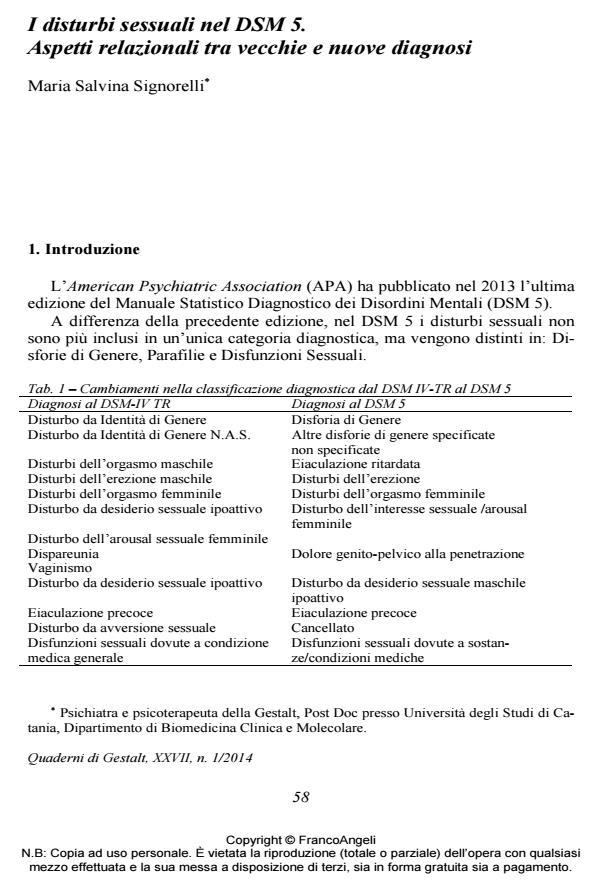I disturbi sessuali nel DSM 5. Aspetti relazionali tra vecchie e nuove diagnosi
Titolo Rivista QUADERNI DI GESTALT
Autori/Curatori Maria Salvina Signorelli
Anno di pubblicazione 2014 Fascicolo 2014/1
Lingua Italiano Numero pagine 7 P. 58-64 Dimensione file 78 KB
DOI 10.3280/GEST2014-001006
Il DOI è il codice a barre della proprietà intellettuale: per saperne di più
clicca qui
Qui sotto puoi vedere in anteprima la prima pagina di questo articolo.
Se questo articolo ti interessa, lo puoi acquistare (e scaricare in formato pdf) seguendo le facili indicazioni per acquistare il download credit. Acquista Download Credits per scaricare questo Articolo in formato PDF

FrancoAngeli è membro della Publishers International Linking Association, Inc (PILA)associazione indipendente e non profit per facilitare (attraverso i servizi tecnologici implementati da CrossRef.org) l’accesso degli studiosi ai contenuti digitali nelle pubblicazioni professionali e scientifiche
L’articolo analizza i cambiamenti nella classificazione diagnostica dei disturbi sessuali nel passaggio dal DSM IV-TR al DSM 5. Sottolinea, oltre all’inquadramento nosografico, l’importanza di cogliere l’aspetto relazionale di tali disturbi e propone la lettura fenomenologica e relazionale della psicoterapia della Gestalt.
Parole chiave:Disturbi sessuali, parafilie, disforie di genere, DSM 5, ansia.
- Psychotraumatology of Images in Gender Dysphoria Salvatore Settineri, Fabio Frisone, Emanuele Maria Merlo, in The Open Psychology Journal /2018 pp.222
DOI: 10.2174/1874350101811010222
Maria Salvina Signorelli, I disturbi sessuali nel DSM 5. Aspetti relazionali tra vecchie e nuove diagnosi in "QUADERNI DI GESTALT" 1/2014, pp 58-64, DOI: 10.3280/GEST2014-001006